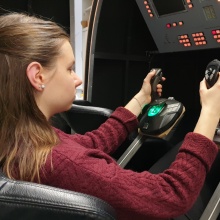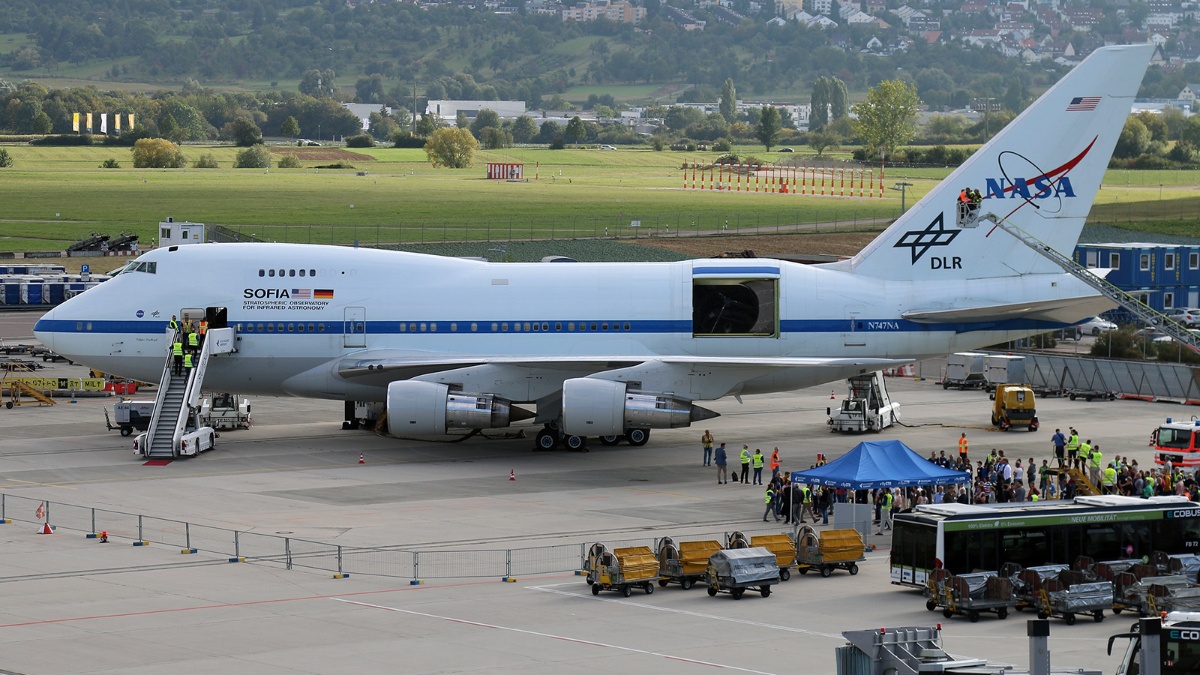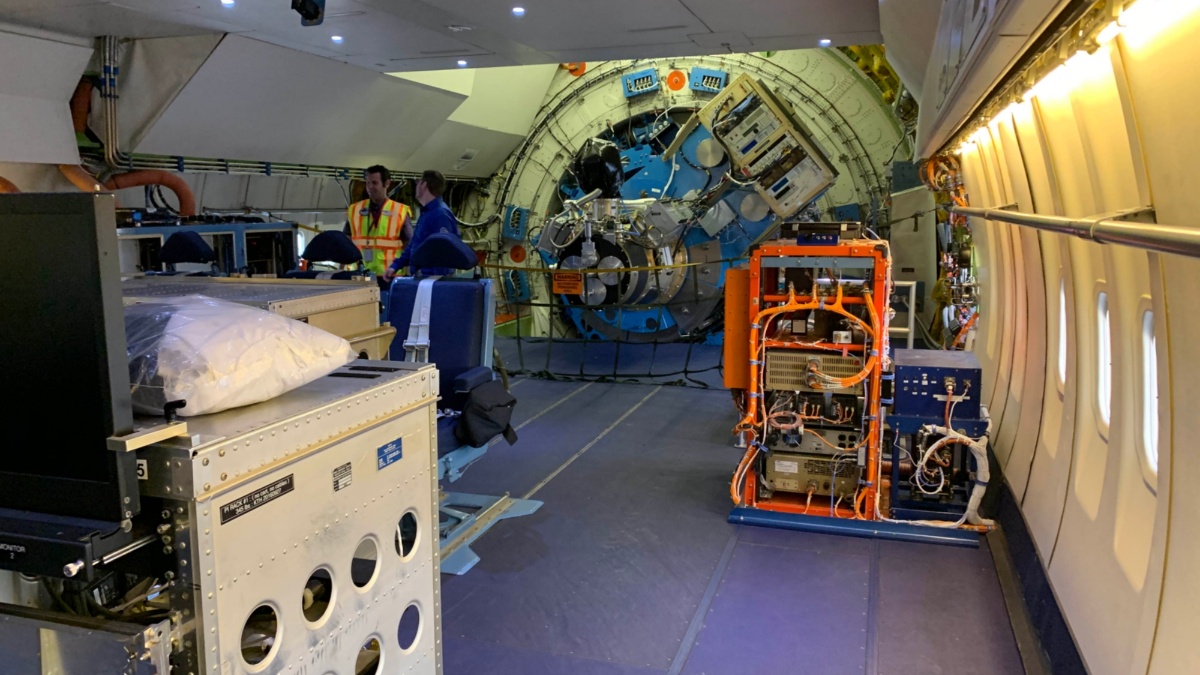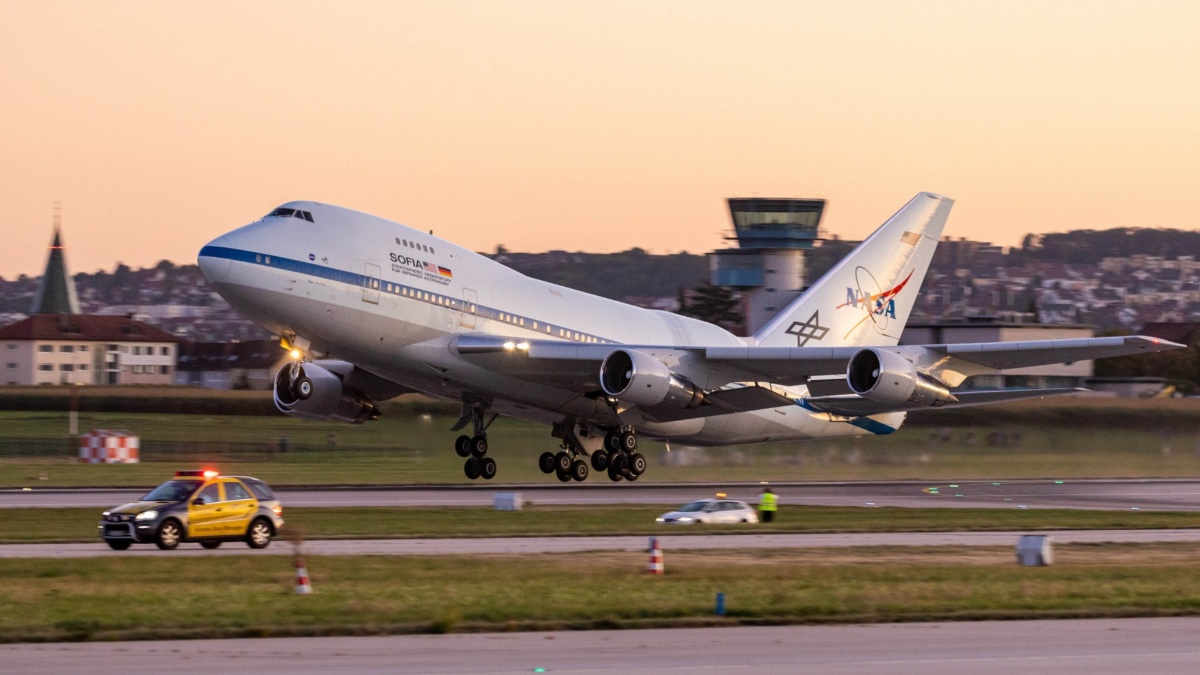“A muffled rumble and metallic bangs, that was all we heard from the launch of the Soyuz rocket”, says Professor Reinhold Ewald, a physicist and astronaut deployed at the Mir space station in 1997. Today, he teaches at the University of Stuttgart’s Institute of Space Systems (IRS), in the Department of Astronautics and Space Stations. He particularly appreciates that the Aerospace Engineering study program places great emphasis on practical student projects, interdisciplinary research and sustainable visions. “Researchers and students have lots of opportunities to take part in aerospace projects or even get involved in sustainable projects.”
One example of this is the satellite missions that Professor Sabine Klinkner and her team conduct at the IRS. She developed the small satellite Flying Laptop, together with doctoral students and students. The satellite weighs approximately 110 kilos. It has been operating in orbit successfully since 2017, and the young researchers have been using it to gather a wealth of relevant data ever since. “We are currently using artificial intelligence to further automate the satellites operations”, says Klinkner. With this approach, the team is hoping to recognize operational problems earlier. This is important to improve the reliability of future satellite missions.
Sending a dust telescope into space
In addition to earthbound satellites, interplanetary probes also analyze cosmic dust [de], thus providing more information about our universe. For example, micrometeoroids deliver information about the formation of our solar system and about how life is transported throughout the universe. Students and scientists are currently developing a dust telescope that will be the main cargo carried on the Japanese mission DESTINY+, used to measure the chemical composition of cosmic dust. The launch of DESTINY+ is planned for 2024 and the spacecraft will take four years to reach its destination, the active asteroid Phaethon.
Flying infrared observatory
SOFIA is the world’s only flying infrared observatory, and a few months ago it made an important discovery: SOFIA discovered water on the side of the moon facing the earth. SOFIA is one of the largest bilateral US-German projects engaged in researching space. The scientific operation of the flying observatory in German is coordinated by the German SOFIA Institute (DSI) at the University of Stuttgart.
SOFIA
The Stratospheric Observatory for Infrared Astronomy (SOFIA) is a converted Boeing 747 SP. It has a 17-tonne telescope on board and a far-infrared spectrometer FIFI-LS (Field-Imaging Far-Infrared Line Spectrometer). A team at the University of Stuttgart was responsible for bringing the spectrometer into operation. Scientists regularly undertake observation flights on SOFIA. For further information about SOFIA.
Prof. Alfred Krabbe, director of the DSI, has already flown with SOFIA more than 30 times: “Every flight with SOFIA is a new adventure. Because SOFIA flies extremely high, one has the sense of coming closer to space.” Water is essential for survival, and its discovery on the moon has significant ramifications for the planning and implementation of future moon missions, explains Krabbe. “We celebrate each and every successful observation flight and hope to fly with the unique SOFIA for a further 10 to 20 years.”
Life support system
Aerospace research at the University of Stuttgart goes far beyond focusing on the immediate future. One exemplary project is the vision of a life support system for the city “Nüwa” on Mars. It is designed to support one million people on the red planet and was designed by Dr. Gisela Detrell from IRS. The life support system is essential, because it must be capable of providing everything that humans need to survive, independent of the earth.
Experiencing docking at the ISS
Anyone who wishes to know what it feels like to dock onto a space station can test their skills in the Soyuz simulator – the only one of its kind in Germany. The capsule, which is a simplified replica of the cockpit of a Soyuz spacecraft, is housed at the IRS. Students can steer and control a complex spacecraft in a typical mission scenario, such as a flight to the international space center, for example.
“Anyone who steps out of the Soyuz simulator has a sparkle in their eye. Docking onto the ISS stirs up lots of emotions and it really is a unique opportunity to experience a manned space flight close up”, says Ewald.








